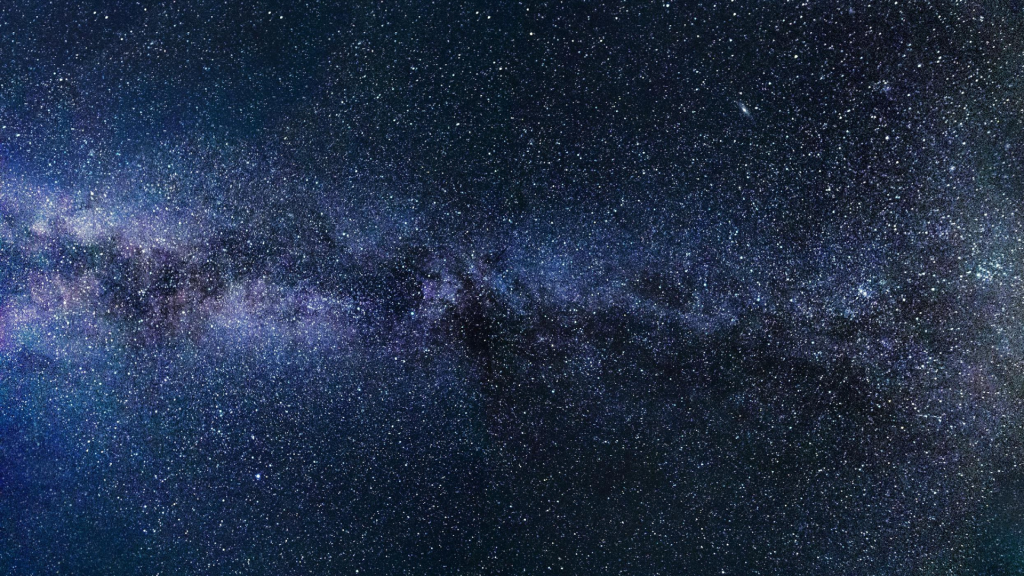When you look up at the stars, everything feels quiet and calm. But space isn’t just pretty—it’s also full of strange and scary things.
Some parts of space are so weird and dangerous, they sound fake—but they’re real.
So, get ready to learn about the creepiest and most surprising space facts.
After reading this, you might never see the night sky the same way again.
1. Star Explosions
When a massive star runs out of fuel, it explodes in a supernova, releasing more energy in seconds than our sun will in its whole life.
Supernovas are so bright, they can outshine entire galaxies. The blast can destroy planets nearby and scatter heavy elements across space, making new stars and planets possible.
2. Black Hole Prisons
A black hole is a place where gravity is so strong, not even light can escape. It forms when a giant star collapses at the end of its life.
If you fell in, you’d be stretched thin by the gravity process called “spaghettification.” Time would slow down so much, your last moments would seem to last forever.
3. Invisible Danger: Dark Flow
Scientists have found that huge groups of galaxies are moving toward something unknown, far away, at millions of miles per hour. They call this strange pull “dark flow.”
No one knows what’s causing dark flow or what’s out there. It might be something massive outside our known universe, pulling everything toward it.
4. Space Radiation
Space is filled with invisible radiation that can damage living things. Astronauts sometimes see flashes of light in their eyes, which is radiation hitting their retinas.
Without strong protection, a human in deep space would get sick or die from radiation in just a few days. Earth’s atmosphere keeps us safe from most of it.
5. Hidden Hunters: Black Holes
There may be hundreds of black holes hiding in the galaxy. However, they are invisible unless they are consuming nearby stars or gas, which causes them to glow in X-rays.
These hidden black holes drift silently through space, and we might not notice one until it gets close enough to cause real trouble.
6. Sun Storms
The sun occasionally releases massive bursts of energy known as solar flares. These storms can send waves of charged particles toward Earth, disrupting satellites and power grids.
In 1859, a solar storm set telegraph papers on fire. If a similar storm hit today, it could knock out electricity and technology for months.
7. Diamond Planets
Some planets in space are made mostly of diamond, formed by extreme pressure deep inside. These worlds are beautiful, but deadly air, crushing gravity, and scorching temperatures.
Scientists believe that a planet called 55 Cancri e could be one giant diamond, shining in the darkness, but impossible for life as you know it.
8. The Great Attractor
Our galaxy and many others are being pulled toward a mysterious spot in space known as “The Great Attractor.” It’s so far away, you can’t see what it is.
This unknown force is moving galaxies at millions of miles per hour. No one knows what will happen if you ever reach it.
9. Moon Escape
The Moon is slowly drifting away from Earth, about 1.5 inches every year. This tiny change will eventually make days longer and change ocean tides.
Millions of years from now, Earth’s balance could shift so much that life here might have to adapt or face big challenges.
10. Planet Invaders: Rogue Planets
Some planets don’t go around a star. They float through space all by themselves. If one of these rogue planets came into our solar system, it could push Earth out of its path.
This might cause Earth to freeze far from the Sun or become too hot if it moves too close. Rogue planets are hard to see, which makes them a quiet but serious danger.
11. Pluto’s Hidden Ocean
Under Pluto’s icy surface, scientists think there is a hidden ocean of liquid water, kept warm by heat from its core.
This dark, deep ocean could hold strange forms of life, living in total darkness, billions of miles from the Sun.
12. Cannibal Stars
Some giant stars can pull in and “eat” their smaller neighbors, ripping them apart and growing even bigger.
These cannibal stars leave behind cosmic wreckage and sometimes trigger massive explosions that illuminate the galaxy.
13. Zombie Stars
Some stars explode in a supernova, then somehow come back to life and explode again. Scientists call these strange objects “zombie stars.”
Zombie stars defy what we thought was possible about how stars live and die, showing that space is full of surprises.
14. The Big Rip
The universe is expanding at an accelerated rate due to a phenomenon known as dark energy. If this continues, everything- even atoms could be torn apart in the “Big Rip.”
This would be the ultimate end, leaving only emptiness and darkness behind. No stars, no planets, just a cold, silent universe.
15. Monster Black Holes
The largest black hole ever discovered is approximately 66 billion times more massive than our Sun. It sits at the center of a distant galaxy, swallowing everything nearby.
If this monster black hole were in our solar system, it would easily gobble up all the planets, including Earth, without even slowing down.
16. Space Alcohol
There is a giant cloud of alcohol floating in space, 1,000 times bigger than our solar system. It’s made of ethyl alcohol, the kind in drinks.
But don’t get excited, it’s mixed with deadly chemicals and is cold. It’s more dangerous than any drink on Earth.
17. Mars Ice
Mars has frozen water buried under its surface. Scientists hope to find signs of ancient life trapped in this red ice.
If anything is alive or preserved there, it could teach us about the chances of life on other planets.
18. Vacuum Death
In the vacuum of space, your blood would boil and your body would freeze at the same time. There is no air so that you would pass out in seconds.
Even with a spacesuit, a tiny hole could be deadly. Space is not just empty; it’s a hostile, dangerous place.
19. Star Density
A teaspoon of material from a neutron star would weigh as much as all the people on Earth combined. Neutron stars are the crushed cores of dead stars.
Their gravity is so strong that they can squeeze atoms until they are almost solid. However, these tiny stars can spin hundreds of times per second.
20. Silent Screams
Space is silent to our ears, but planets and stars make “eerie” sounds that scientists can turn into audio waves.
Saturn’s radio waves, for example, sound like ghostly wails and haunted whispers when played through speakers.
21. Dark Side Waters
The far side of the Moon has water hidden in deep shadows that never see sunlight. These places have been frozen for billions of years.
No one knows what could be hiding in that eternal darkness. However, some future missions may reveal ancient secrets locked in lunar ice.
22. Mars’ Lost Life
Mars once had rivers and lakes, but now it’s a frozen desert. Something happened to strip away its water and atmosphere.
So, scientists are searching for clues about what went wrong. If Mars lost its life, could the same thing happen to Earth?
23. Glass Rain
On planet HD 189733b, it rains glass sideways at 5,400 miles per hour. Heavy winds across the planet blow the glass shards.
This alien weather would slice through anything in its path. It’s one of the most dangerous storms known in the universe.
24. Alien Lakes
Saturn’s moon Titan has lakes of liquid methane instead of water. These alien lakes could hold life forms totally different from anything on Earth.
The air is so cold, the water is rock-hard, but methane flows like water. Titan is a world of strange chemistry.
25. Runaway Universe
The universe is expanding at an accelerating rate that scientists cannot fully explain. Something unknown is pushing everything apart, and you don’t know what it is.
This “runaway” expansion means galaxies are racing away from each other. Someday, distant galaxies may disappear from view forever.
26. Missing Aliens
With billions of planets, you should have found aliens by now. Their silence is called the “Fermi Paradox.”
Perhaps something prevents civilizations from surviving long enough to make contact with others. Or maybe you are truly alone in the universe.
27. Reality Breakers
Black holes and some other space objects break the laws of physics as you know them. Near these monsters, reality itself seems to work differently.
However, scientists are still trying to understand what happens inside a black hole. It’s one of the biggest mysteries in science.
28. Venus Hellscape
Venus is hot enough to melt lead and rains acid from thick clouds. It may have once been like Earth, but now it’s a deadly furnace.
However, studying Venus helps you understand how planets can change. It’s a warning of what could happen if the world goes wrong.
29. Space Smells
Astronauts say space smells like burning metal or gunpowder. The scent comes from dying stars and cosmic radiation sticking to their suits.
Even in the vacuum, space leaves a mark. It’s a reminder that space is full of strange surprises.
30. Ancient Visitors
Some asteroids carry materials older than our solar system. When they hit Earth, they bring pieces of the ancient universe with them.
So, just by studying these space rocks, you can learn how planets and stars first formed, billions of years ago.
31. The Final Silence
One day, all stars will burn out, leaving a cold, dark universe. This “heat death” is the scientific prediction for how everything ultimately comes to an end.
No more light, no more warmth, just endless night. The universe will become silent, empty, and still.
NOTE: Whatever it is, the stars will always call to us, urging us to face the darkness and understand the mysteries that lie beyond.




















